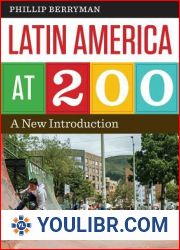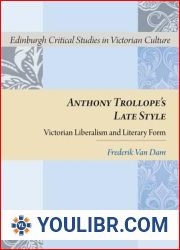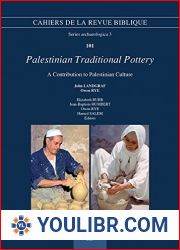
BOOKS - Eating Chinese: Culture on the Menu in Small Town Canada (Cultural Spaces)

Eating Chinese: Culture on the Menu in Small Town Canada (Cultural Spaces)
Author: Lily Cho
Year: November 1, 2010
Format: PDF
File size: PDF 1.6 MB
Language: English

Year: November 1, 2010
Format: PDF
File size: PDF 1.6 MB
Language: English

The plot of the book "Eating Chinese: Culture on the Menu in Small Town Canada" revolves around the history and evolution of Chinese restaurants in small towns across Canada, highlighting their significance in shaping the cultural identity of both Chinese immigrants and non-Chinese Canadians. The author, Lily Cho, delves into the menus, literature, art, and music of these establishments to uncover the ways in which they have created a new kind of cultural infrastructure that has enabled them to thrive despite facing adversity. The book begins by exploring the historical context of Chinese immigration to Canada, tracing the restrictions and explicitly racist legislation that have impacted the community's growth and development. Despite these challenges, Chinese immigrants have managed to dominate the restaurant industry in Canada, with Chinese restaurants becoming ubiquitous in even the smallest towns. This phenomenon is not limited to urban centers, as one would expect, but rather is a feature of small-town Canada, where they have become an integral part of the local culinary landscape. Cho argues that these restaurants serve as more than just places to eat; they are cultural spaces that define what it means to be Chinese and Chinese-Canadian. Through the food they prepare and serve, Chinese communities have been able to connect with their non-Chinese neighbors, fostering a sense of belonging and understanding.
Сюжет книги «Eating Chinese: Culture on the Menu in Small Town Canada» вращается вокруг истории и эволюции китайских ресторанов в небольших городах по всей Канаде, подчеркивая их значение в формировании культурной идентичности как китайских иммигрантов, так и некитайских канадцев. Автор, Лили Чо, углубляется в меню, литературу, искусство и музыку этих заведений, чтобы раскрыть пути, которыми они создали новый вид культурной инфраструктуры, которая позволила им процветать, несмотря на трудности. Книга начинается с изучения исторического контекста китайской иммиграции в Канаду, отслеживания ограничений и явно расистского законодательства, которые повлияли на рост и развитие сообщества. Несмотря на эти проблемы, китайским иммигрантам удалось доминировать в ресторанной индустрии Канады, причем китайские рестораны стали повсеместными даже в самых маленьких городах. Это явление не ограничивается городскими центрами, как можно было бы ожидать, а скорее является особенностью местечковой Канады, где они стали неотъемлемой частью местного кулинарного ландшафта. Чо утверждает, что эти рестораны служат не только местами для еды; это культурные пространства, которые определяют, что значит быть китайцем и китайско-канадцем. Благодаря еде, которую они готовят и подают, китайские общины смогли связаться со своими некитайскими соседями, способствуя чувству принадлежности и понимания.
L'histoire du livre Eating Chinese : Culture on the Menu in Small Town Canada tourne autour de l'histoire et de l'évolution des restaurants chinois dans les petites villes du Canada, soulignant leur importance dans la formation de l'identité culturelle des immigrants chinois et des Canadiens non chinois. L'auteure, Lily Cho, explore les menus, la littérature, l'art et la musique de ces établissements afin de découvrir les voies par lesquelles ils ont créé un nouveau type d'infrastructure culturelle qui leur a permis de prospérer malgré les difficultés. livre commence par un examen du contexte historique de l'immigration chinoise au Canada, le suivi des restrictions et des lois apparemment racistes qui ont influencé la croissance et le développement de la communauté. Malgré ces difficultés, les immigrants chinois ont réussi à dominer l'industrie de la restauration au Canada, et les restaurants chinois sont devenus omniprésents même dans les plus petites villes. Ce phénomène ne se limite pas aux centres urbains, comme on pourrait s'y attendre, mais est plutôt une caractéristique du Canada local, où ils font désormais partie intégrante du paysage culinaire local. Cho affirme que ces restaurants ne servent pas seulement à manger ; ce sont des espaces culturels qui définissent ce que signifie être chinois et sino-canadien. Grâce à la nourriture qu'ils préparent et servent, les communautés chinoises ont pu entrer en contact avec leurs voisins non chinois en favorisant un sentiment d'appartenance et de compréhension.
La trama del libro «Eating Chinese: Culture on the Menu in Small Town Canada» gira en torno a la historia y evolución de los restaurantes chinos en pequeñas ciudades de todo Canadá, destacando su importancia en la formación de la identidad cultural tanto de los inmigrantes chinos como de los canadienses no chinos. La autora, Lili Cho, profundiza en los menús, la literatura, el arte y la música de estos establecimientos para exponer las formas en las que han creado un nuevo tipo de infraestructura cultural que les ha permitido prosperar a pesar de las dificultades. libro comienza explorando el contexto histórico de la inmigración china a Canadá, rastreando las restricciones y leyes claramente racistas que han afectado el crecimiento y desarrollo de la comunidad. A pesar de estos problemas, los inmigrantes chinos han logrado dominar la industria de restaurantes en Canadá, con restaurantes chinos que se han generalizado incluso en las ciudades más pequeñas. Este fenómeno no se limita a los centros urbanos, como cabría esperar, sino que es una característica del Canadá local, donde se han convertido en parte integral del paisaje culinario local. Cho afirma que estos restaurantes no solo sirven como lugares para comer; son espacios culturales que definen lo que significa ser chino y chino-canadiense. Gracias a la comida que preparan y sirven, las comunidades chinas han podido contactar con sus vecinos no chinos, contribuyendo a un sentido de pertenencia y comprensión.
A história do livro «Eating Chinese: Cultura on the Menu in Small Town Canadá» gira em torno da história e evolução de restaurantes chineses em cidades pequenas em todo o Canadá, destacando a sua importância na formação da identidade cultural de imigrantes chineses e canadianos não-chineses. A autora, Lily Cho, aprofunda-se no cardápio, na literatura, na arte e na música destes estabelecimentos para revelar os caminhos que eles criaram para criar um novo tipo de infraestrutura cultural que os permitiu prosperar, apesar das dificuldades. O livro começa com um estudo do contexto histórico da imigração chinesa para o Canadá, rastreamento das restrições e legislação claramente racista que afetou o crescimento e o desenvolvimento comunitário. Apesar desses problemas, os imigrantes chineses conseguiram dominar a indústria de restaurantes no Canadá, e os restaurantes chineses se tornaram comuns mesmo nas cidades mais pequenas. Este fenômeno não se restringe aos centros urbanos, como se poderia esperar, mas é mais uma característica do Canadá, onde se tornaram parte integrante da paisagem culinária local. Cho afirma que estes restaurantes não servem apenas como locais de comida; são espaços culturais que definem o que significa ser chinês e chinês-canadiano. Graças à comida que eles cozinham e servem, as comunidades chinesas conseguiram contactar os seus vizinhos não chineses, promovendo um sentimento de pertencimento e compreensão.
La trama del libro «Eating Chinese: Culture on the Menu in Small Town Canada» ruota intorno alla storia e all'evoluzione dei ristoranti cinesi in piccole città in Canada, sottolineando la loro importanza nella formazione dell'identità culturale sia degli immigrati cinesi che dei canadesi non cinesi. L'autrice, Lily Cho, approfondisce i menu, la letteratura, l'arte e la musica di questi istituti per rivelare i modi in cui hanno creato un nuovo tipo di infrastruttura culturale che ha permesso loro di prosperare nonostante le difficoltà. Il libro inizia esplorando il contesto storico dell'immigrazione cinese in Canada, tracciando le restrizioni e la legislazione chiaramente razzista che ha influenzato la crescita e lo sviluppo della comunità. Nonostante questi problemi, gli immigrati cinesi sono riusciti a dominare l'industria della ristorazione canadese, con ristoranti cinesi divenuti diffusi anche nelle città più piccole. Questo fenomeno non si limita ai centri urbani, come ci si aspetterebbe, ma è più una caratteristica del Canada, dove sono diventati parte integrante del panorama culinario locale. Cho sostiene che questi ristoranti non servono solo a mangiare; sono spazi culturali che determinano cosa significa essere cinesi e cinese-canadesi. Grazie al cibo che cucinano e servono, le comunità cinesi sono riuscite a contattare i loro vicini non cinesi, favorendo il senso di appartenenza e comprensione.
Die Handlung von „Eating Chinese: Culture on the Menu in Small Town Canada“ dreht sich um die Geschichte und Entwicklung chinesischer Restaurants in Kleinstädten in ganz Kanada und unterstreicht deren Bedeutung für die kulturelle Identitätsbildung sowohl chinesischer Einwanderer als auch nicht-chinesischer Kanadier. Der Autor, Lily Cho, taucht tief in die Menüs, Literatur, Kunst und Musik dieser Institutionen ein, um die Wege aufzudecken, auf denen sie eine neue Art kultureller Infrastruktur geschaffen haben, die es ihnen ermöglichte, trotz der Schwierigkeiten zu gedeihen. Das Buch beginnt mit der Untersuchung des historischen Kontexts der chinesischen Einwanderung nach Kanada, der Verfolgung von Beschränkungen und eindeutig rassistischen Gesetzen, die das Wachstum und die Entwicklung der Gemeinschaft beeinflusst haben. Trotz dieser Probleme gelang es chinesischen Einwanderern, Kanadas Restaurantbranche zu dominieren, wobei chinesische Restaurants selbst in den kleinsten Städten allgegenwärtig wurden. Dieses Phänomen beschränkt sich nicht auf urbane Zentren, wie man es erwarten würde, sondern ist eine Besonderheit des kleinstädtischen Kanada, wo sie zu einem festen Bestandteil der lokalen kulinarischen Landschaft geworden sind. Cho argumentiert, dass diese Restaurants nicht nur als Orte zum Essen dienen; Es sind kulturelle Räume, die definieren, was es bedeutet, chinesisch und chinesisch-kanadisch zu sein. Durch das Essen, das sie zubereiten und servieren, konnten die chinesischen Gemeinden mit ihren nicht-chinesischen Nachbarn in Kontakt treten und ein Gefühl der Zugehörigkeit und des Verständnisses fördern.
Fabuła jedzenia chiński: Kultura na menu w małym miasteczku Kanada obraca się wokół historii i ewolucji chińskich restauracji w małych miastach w całej Kanadzie, podkreślając ich znaczenie w kształtowaniu tożsamości kulturowej zarówno chińskich imigrantów i Kanadyjczyków nie-chińskich. Autorka, Lily Cho, zagłębia się w menu, literaturę, sztukę i muzykę tych miejsc, aby odkryć, w jaki sposób stworzyli nowy rodzaj infrastruktury kulturalnej, która pozwoliła im rozwijać się pomimo wyzwań. Książka rozpoczyna się od zbadania historycznego kontekstu chińskiej imigracji do Kanady, śledzenia ograniczeń i wyraźnie rasistowskich przepisów, które wpłynęły na wzrost i rozwój społeczności. Pomimo tych problemów chińscy imigranci zdołali zdominować kanadyjski przemysł restauracyjny, a chińskie restauracje stały się wszechobecne nawet w najmniejszych miastach. Zjawisko to nie ogranicza się do ośrodków miejskich, jak można się spodziewać, ale jest cechą miasta Kanada, gdzie stały się integralną częścią miejscowego krajobrazu kulinarnego. Cho twierdzi, że te restauracje służą jako więcej niż tylko miejsca do jedzenia; są to przestrzenie kulturowe, które definiują, co to znaczy być chińskim i chińsko-kanadyjskim. Dzięki jedzeniu, które gotują i służą, chińskie społeczności były w stanie połączyć się ze swoimi sąsiadami spoza Chin, rozwijając poczucie przynależności i zrozumienia.
''
Eating Chinese: Culture on the Menu in Small Town Canada, Kanada'daki küçük kasabalardaki Çin restoranlarının tarihi ve evrimi etrafında dönüyor ve hem Çinli göçmenlerin hem de Çinli olmayan Kanadalıların kültürel kimliğini şekillendirmedeki önemini vurguluyor. Yazar Lily Cho, zorluklara rağmen gelişmelerine izin veren yeni bir tür kültürel altyapı oluşturma yollarını ortaya çıkarmak için bu mekanların menülerine, edebiyatına, sanatına ve müziğine giriyor. Kitap, Çin'in Kanada'ya göçünün tarihsel bağlamını inceleyerek, kısıtlamaları ve toplumun büyümesini ve gelişimini etkileyen açıkça ırkçı yasaları izleyerek başlıyor. Bu sorunlara rağmen, Çinli göçmenler Kanada'nın restoran endüstrisine hakim olmayı başardılar ve Çin restoranları en küçük şehirlerde bile her yerde bulunuyor. Bu fenomen, beklenebileceği gibi şehir merkezleriyle sınırlı değildir, aksine, yerel mutfak manzarasının ayrılmaz bir parçası haline geldikleri Kanada'nın bir özelliğidir. Cho, bu restoranların sadece yemek yenecek yerlerden daha fazlası olduğunu savunuyor; Bunlar, Çinli ve Çinli-Kanadalı olmanın ne demek olduğunu tanımlayan kültürel alanlardır. Pişirdikleri ve sundukları yiyeceklerle Çinli topluluklar, Çinli olmayan komşularıyla bağlantı kurarak aidiyet ve anlayış duygusu geliştirdiler.
تدور حبكة تناول اللغة الصينية: الثقافة في القائمة في مدينة صغيرة في كندا حول تاريخ وتطور المطاعم الصينية في المدن الصغيرة في جميع أنحاء كندا، مما يسلط الضوء على أهميتها في تشكيل الهوية الثقافية لكل من المهاجرين الصينيين والكنديين غير الصينيين. تتعمق المؤلفة، ليلي تشو، في قوائم الطعام والأدب والفن والموسيقى في هذه الأماكن للكشف عن الطرق التي أنشأوا بها نوعًا جديدًا من البنية التحتية الثقافية التي سمحت لهم بالازدهار على الرغم من التحديات. يبدأ الكتاب بفحص السياق التاريخي للهجرة الصينية إلى كندا، وتتبع القيود والتشريعات العنصرية الصريحة التي أثرت على نمو المجتمع وتنميته. على الرغم من هذه المشاكل، تمكن المهاجرون الصينيون من السيطرة على صناعة المطاعم في كندا، حيث أصبحت المطاعم الصينية منتشرة في كل مكان حتى في أصغر المدن. لا تقتصر هذه الظاهرة على المراكز الحضرية كما هو متوقع، بل هي سمة من سمات بلدة كندا، حيث أصبحت جزءًا لا يتجزأ من مشهد الطهي المحلي. يجادل تشو بأن هذه المطاعم هي أكثر من مجرد أماكن لتناول الطعام ؛ هذه هي المساحات الثقافية التي تحدد معنى أن تكون صينيًا وصينيًا كنديًا. مع الطعام الذي يطبخونه ويقدمونه، تمكنت المجتمعات الصينية من التواصل مع جيرانها غير الصينيين، مما عزز الشعور بالانتماء والتفاهم.
《吃中國人:加拿大小鎮菜單上的文化》的情節圍繞著加拿大小城鎮中餐館的歷史和演變,強調了它們在塑造中國移民和非中國加拿大人的文化認同中的重要性。作者趙莉莉(Lily Cho)深入研究了這些機構的菜單,文學,藝術和音樂,以揭示他們創造了一種新型文化基礎設施的方式,盡管遇到了困難,但它們還是得以蓬勃發展。該書首先探討了中國移民加拿大的歷史背景,追蹤了影響社區增長和發展的限制和明顯的種族主義立法。盡管面臨這些挑戰,中國移民還是成功地主導了加拿大的餐飲業,即使在最小的城市,中國餐館也變得無處不在。這種現象並不像預期的那樣局限於城市中心,而是加拿大小鎮的特征,在那裏它們已成為當地烹飪景觀的重要組成部分。Cho認為,這些餐館不僅是進餐的地方;這些文化空間決定了成為中國人和華裔加拿大人意味著什麼。通過他們準備和供應的食物,中國社區能夠與非中國鄰居聯系,促進歸屬感和理解感。








 49
49  2 TON
2 TON

![Crestwood Heights; a study of the culture of suburban life [by] John R. Seeley R. Alexander Sim [and] Elizabeth W. Loosley. Introd. by David Riesman. 1956 [Leather Bound] Crestwood Heights; a study of the culture of suburban life [by] John R. Seeley R. Alexander Sim [and] Elizabeth W. Loosley. Introd. by David Riesman. 1956 [Leather Bound]](https://youlibr.com/img/7/766067_oc.jpg)
![Sprache - Kultur - Kommunikation Language - Culture - Communication: Ein internationales Handbuch zu Linguistik als Kulturwissenschaft An … Science [HSK], 43) (German Edition) Sprache - Kultur - Kommunikation Language - Culture - Communication: Ein internationales Handbuch zu Linguistik als Kulturwissenschaft An … Science [HSK], 43) (German Edition)](https://youlibr.com/img/9/977256_oc.jpg)





























![Change the Culture, Change the Game by Connors, Roger, Smith, Tom. (Portfolio Trade,2012) [Paperback] Reprint Edition Change the Culture, Change the Game by Connors, Roger, Smith, Tom. (Portfolio Trade,2012) [Paperback] Reprint Edition](https://youlibr.com/img/5/596409_oc.jpg)







